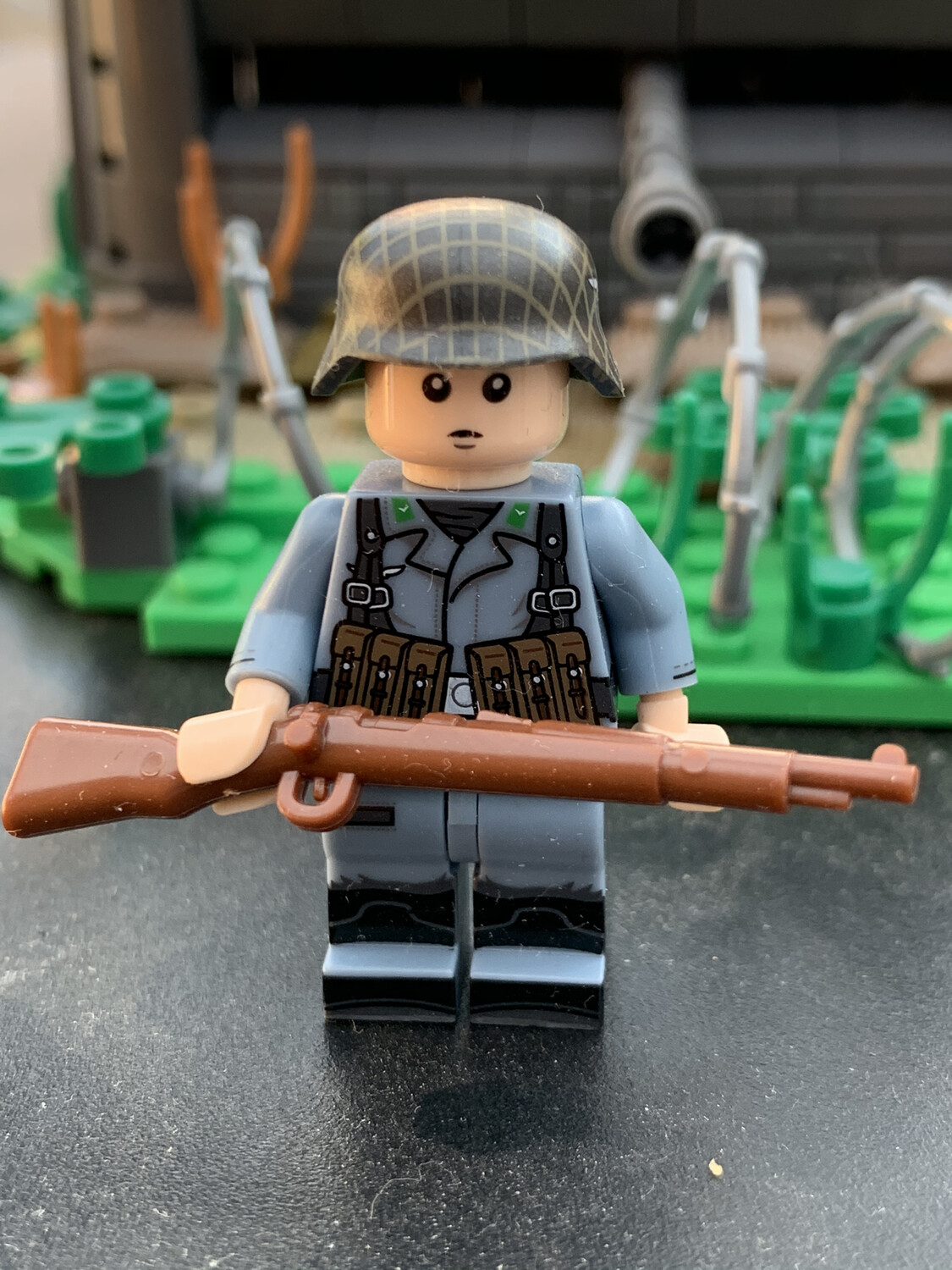Luftwaffe Field Division
The plan was approved, and the divisions were raised from 200,000–250,000 Luftwaffe ground, support and other excess personnel. They were initially organized with two Jäger regiments of three battalions each, along with an artillery battalion and other support units, but were substantially smaller than equivalent Heer divisions, and by Göring's personal order were intended to be restricted to defensive duties in quieter sectors. Most of the units spent much of their existence on the Eastern Front : Luftwaffe Field Divisions were present at actions such as the "Little Stalingrad of the North", the attempt to relieve Velikiye Luki ; the attempted defence of Vitebsk during Operation Bagration , and the fighting in the Courland Pocket , though they also fought in other theatres.
The Luftwaffe Field Divisions initially remained under Luftwaffe command, but late in 1943 those that had not already been disbanded were handed over to the Heer and were reorganized as standard infantry divisions with three two-battalion rifle regiments (retaining their numbering, but with Luftwaffe attached to distinguish them from similarly numbered divisions already existing in the Heer ) and Army officers.
Until taken over by the Heer (and in many cases for some time afterwards) these units were issued with standard Luftwaffe feldblau uniforms, and being so easily identifiable were said to often be singled out by opposite forces. Their reputation as combat troops was poor, despite the high standard of Luftwaffe recruits, at least in part from being required to perform roles (ground warfare) for which they as airmen had little training. They were frequently used for rear echelon duties to free up front line troops.

